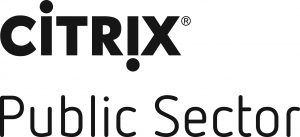This article is an excerpt from GovLoop’s recent guide,”IT Modernization: How Government Does IT.” Download the full guide here.
Although IT modernization shows significant promise for government, upgrading or migrating technologies just for the sake of doing so doesn’t always translate to better agency performance. IT modernization requires leveraging the efficiencies technology has to offer, defining measures of success and aligning those measures with government missions.
One way that government is achieving IT modernization is through next-generation networks. In an interview with GovLoop, Jose Padin, Public Sector CTO at Citrix, shared how next-generation networks lead to successful IT modernization and how they can support digital workspaces. Citrix empowers government agencies in their digital transformation journey by aligning IT with agency missions.
The majority of IT modernization efforts start with virtualizing IT environments and moving to the cloud. Virtualization in government has made compute infrastructure and storage more flexible, yielding significant gains in IT efficiency. But unlike advancements in compute and storage virtualization, networking virtualization has not kept pace and poses significant hurdles, such as cyber risk, for government.
When networks remain static, any upgrades in virtual environments such as the cloud can lead to failure. “Government has well-matured network infrastructure with multiple layers of traditional firewalls, routing, switching and tools,” Padin said. “But getting to the next level requires using predictive analysis and autonomous network defenses.”
For example, an agency may have several solutions to address a serious cyberattack or repair systems after a breach. But next-generation networks do more than simply notify IT teams of attacks. They enable the agency to inspect web traffic, autonomously counter threats and even predict future cyber events without human intervention. Not only can agencies detect and prevent more cyberattacks, but they can also ensure IT teams have more time for other mission-critical needs.
Next-generation networks are critical for enhancing security, but they are also vital to enhancing citizen engagement. According to Padin, networks are the bloodline of communications with citizens. “In today’s world, everything is interconnected,” he said. “It’s all network-driven. Even talking to constituents is data-driven. Having networks that can help these processes along autonomously can help agencies keep up with their missions.”
Lastly, next-generation networks support the move to digital workspaces. Digital workspaces allow employees to access their work from any device, anywhere, anytime thus improving employee productivity and efficiency. “The digital workspace can easily help the digital transformation journey and is great for aggregating cloud services,” Padin said.
With IT modernization, agency devices such as printers, monitors and even Voice over Internet Protocol lines are increasingly connected to networks, enabling agencies to gather cybersecurity-related information and manage remote devices put to use in a government agency. The digital workspace can offer significant savings in energy, efficiency, security and time while automating processes to make employees’ work lives easier and more productive.
Next-generation networks can also help secure the delivery of apps and data within adaptive and personalized digital workspaces. Users can access any resource they need while IT can monitor network traffic. Additionally users can log on once and gain access to different services. At the same time, IT personnel can keep track of what different users are doing all while maintaining compliance.
Citrix’s modern digital workspace gives agencies the power of next-generation networks to fuel their IT modernization efforts. “From an analytics perspective, we can help agencies see what’s happening at the application level down to the lower levels of the network,” Padin said. “We can give an agency visibility into the entire application layer and store that information. Real-time analytics of the application layer can help agencies understand what good network connections look like and what questionable threats look like.”
With the digital workspace and an array of connected devices, government should always be prepared for cyberthreats. “Normally, you’d have to identify events after they occur,” Padin said. “Citrix gives you the ability to sense and respond to what’s happening in real time.”
Next-generation networks enable agencies to meet a wide variety of mission needs, including improving cybersecurity, citizen engagement and employee productivity. By harnessing next-generation networks, government can take the next step toward IT modernization and, ultimately, achieve digital transformation.






Leave a Reply
You must be logged in to post a comment.